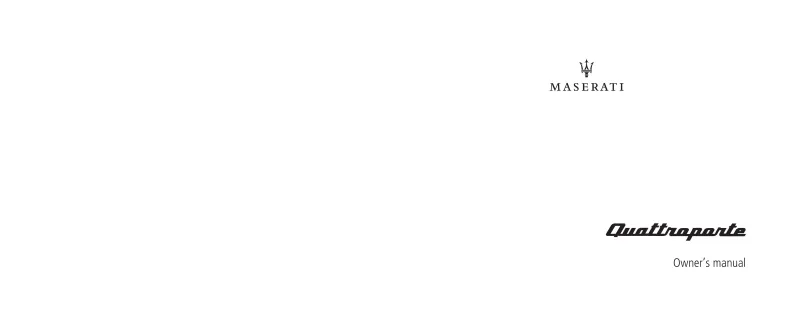2020 Maserati Quattroporte Owner's Manual

Table of Contents
2020 Maserati Quattroporte Overview
Introduction
The 2020 Maserati Quattroporte is the epitome of luxury and performance, designed for enthusiasts who seek a blend of comfort and dynamic driving experience. With its stunning Italian design and meticulous craftsmanship, this grand saloon combines elegance with cutting-edge technology, making every journey a remarkable experience. The Quattroporte not only stands out in the world of luxury cars but also embodies the spirit of Maserati, with racing heritage infused into its DNA.
Powertrains
The Quattroporte offers an exhilarating range of powertrains to cater to diverse driving preferences. At the heart of the lineup is the intelligent twin-turbocharged V6 engine, delivering a staggering 424 horsepower, while the upper-tier GTS variant boasts a 3.8-liter twin-turbo V8, producing a remarkable 530 horsepower. Both engines are mated to an 8-speed automatic transmission, ensuring seamless gear changes and exhilarating acceleration. With rear-wheel drive standard on V6 models and the option of all-wheel drive, the Quattroporte provides an athletic yet refined driving experience.
Trims
The 2020 Maserati Quattroporte is available in several trims: the standard Quattroporte, S, and GTS. Each trim level offers unique features that elevate the driving experience. The standard model comes equipped with essential luxury amenities, while the S adds advanced technology and performance enhancements. The GTS, on the other hand, includes top-tier features and a more powerful engine, making it the ultimate expression of Maserati luxury and performance.
Features
This luxurious sedan is loaded with innovative features designed for comfort and convenience. Inside, you’ll find premium leather upholstery, heated and ventilated seats, a state-of-the-art infotainment system with a high-resolution touchscreen, and advanced driver-assistance technologies. Ambiance is enhanced by customizable ambient lighting and a premium audio system, ensuring every ride is tailored to the owner's preferences.
Owners Manual
The owners manual for the 2020 Maserati Quattroporte serves as an essential guide, providing valuable information on vehicle operation, maintenance, and features. It includes insights on how to optimize the performance of your Maserati, troubleshoot common issues, and understand the sophisticated technology integrated into the vehicle. This resource ensures that owners can fully appreciate and care for their luxurious ride.
User manual download
The Maserati Quattroporte owner manual for the 2020 model year is to be found in PDF downloadable format on this page. The owner manual for the model year 2020 is free and in English, but the repair manuals are usually not easy to get and may cost more.
Manual Questions
Fill the form below and someone will help you!

